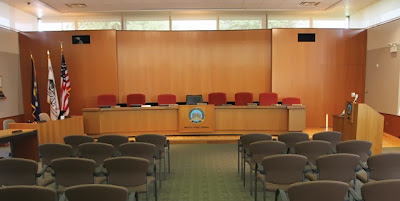North Star Liberty dedicates this poem to all active duty, Reserve, and National Guard soldiers, sailors, airmen, Marines, and Coast Guard who stand upon a wall and say, "Nothing's going to hurt you tonight, not on my watch." God bless you all this Christmas season, and always.
by Marine Lance Corporal James M. Schmidt (1986)
Twas the night before Christmas, he lived all alone,
In a one bedroom house made of plaster and stone.
I had come down the chimney, with presents to give
and to see just who in this home did live.
As I looked all about, a strange sight I did see,
no tinsel, no presents, not even a tree.
No stocking by the fire, just boots filled with sand.
On the wall hung pictures of a far distant land.
With medals and badges, awards of all kind,
a sobering thought soon came to my mind.
For this house was different, unlike any I'd seen.
This was the home of a U.S. Marine.
I'd heard stories about them, I had to see more,
so I walked down the hall and pushed open the door.
And there he lay sleeping, silent, alone,
Curled up on the floor in his one-bedroom home.
He seemed so gentle, his face so serene,
Not how I pictured a U.S. Marine.
Was this the hero, of whom I’d just read?
Curled up in his poncho, a floor for his bed?
His head was clean-shaven, his weathered face tan.
I soon understood, this was more than a man.
For I realized the families that I saw that night,
owed their lives to these men, who were willing to fight.
Soon around the Nation, the children would play,
And grown-ups would celebrate on a bright Christmas day.
They all enjoyed freedom, each month and all year,
because of Marines like this one lying here.
I couldn’t help wonder how many lay alone,
on a cold Christmas Eve, in a land far from home.
Just the very thought brought a tear to my eye.
I dropped to my knees and I started to cry.
He must have awoken, for I heard a rough voice,
"Santa, don't cry, this life is my choice
I fight for freedom, I don't ask for more.
My life is my God, my country, my Corps."
With that he rolled over, drifted off into sleep,
I couldn't control it, I continued to weep.
I watched him for hours, so silent and still.
I noticed he shivered from the cold night's chill.
So I took off my jacket, the one made of red,
and covered this Marine from his toes to his head.
Then I put on his T-shirt of scarlet and gold,
with an eagle, globe and anchor emblazoned so bold.
And although it barely fit me, I began to swell with pride,
and for one shining moment, I was Marine Corps deep inside.
I didn't want to leave him so quiet in the night,
this guardian of honor so willing to fight.
But half asleep he rolled over, and in a voice clean and pure,
said "Carry on, Santa, it's Christmas Day, all secure."
One look at my watch and I knew he was right,
Merry Christmas my friend, Semper Fi and goodnight.
by Marine Lance Corporal James M. Schmidt (1986)
Twas the night before Christmas, he lived all alone,
In a one bedroom house made of plaster and stone.
I had come down the chimney, with presents to give
and to see just who in this home did live.
As I looked all about, a strange sight I did see,
no tinsel, no presents, not even a tree.
No stocking by the fire, just boots filled with sand.
On the wall hung pictures of a far distant land.
With medals and badges, awards of all kind,
a sobering thought soon came to my mind.
For this house was different, unlike any I'd seen.
This was the home of a U.S. Marine.
I'd heard stories about them, I had to see more,
so I walked down the hall and pushed open the door.
And there he lay sleeping, silent, alone,
Curled up on the floor in his one-bedroom home.
He seemed so gentle, his face so serene,
Not how I pictured a U.S. Marine.
Was this the hero, of whom I’d just read?
Curled up in his poncho, a floor for his bed?
His head was clean-shaven, his weathered face tan.
I soon understood, this was more than a man.
For I realized the families that I saw that night,
owed their lives to these men, who were willing to fight.
Soon around the Nation, the children would play,
And grown-ups would celebrate on a bright Christmas day.
They all enjoyed freedom, each month and all year,
because of Marines like this one lying here.
I couldn’t help wonder how many lay alone,
on a cold Christmas Eve, in a land far from home.
Just the very thought brought a tear to my eye.
I dropped to my knees and I started to cry.
He must have awoken, for I heard a rough voice,
"Santa, don't cry, this life is my choice
I fight for freedom, I don't ask for more.
My life is my God, my country, my Corps."
With that he rolled over, drifted off into sleep,
I couldn't control it, I continued to weep.
I watched him for hours, so silent and still.
I noticed he shivered from the cold night's chill.
So I took off my jacket, the one made of red,
and covered this Marine from his toes to his head.
Then I put on his T-shirt of scarlet and gold,
with an eagle, globe and anchor emblazoned so bold.
And although it barely fit me, I began to swell with pride,
and for one shining moment, I was Marine Corps deep inside.
I didn't want to leave him so quiet in the night,
this guardian of honor so willing to fight.
But half asleep he rolled over, and in a voice clean and pure,
said "Carry on, Santa, it's Christmas Day, all secure."
One look at my watch and I knew he was right,
Merry Christmas my friend, Semper Fi and goodnight.












